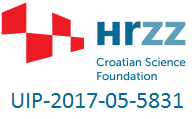 Group for Applied Ultrafast Spectroscopy and Photochemical Identification
Group for Applied Ultrafast Spectroscopy and Photochemical IdentificationM. Forjan and S. Vdović, in collaboration with the scientists from Institute Ruđer Bošković and Politecnico di Milano have published a paper about photodehydration mechanisms of quinone methide from 2-naphthol derivatives.
DOI: 10.1016/j.jphotochem.2022.114171
Photogeneration of quinone methides (QM) from 3-hydroxymethyl-2-naphthol (1) and 3-(2-hydroxy-2-adamantyl)-2-naphthol (2) was investigated using femtosecond and nanosecond transient absorption spectroscopy and supported with theoretical analysis of possible reaction pathways. Our results indicate that adamantylnaphthol 2 after UV excitation undergoes a non-adiabatic excited state intramolecular proton transfer coupled with dehydration via a conical intersection, delivering the corresponding ground state QM within 1 ns. Surprisingly, in naphthol 1 on femtosecond time scale only formation of radical cation and solvated electrons was observed where the photoionization is a competing process not connected to the photochemical reaction of QM formation. Radical cations decay fast (45 ps) due to the back electron transfer. By quenching with ascorbate we identified phenoxyl radicals as a QM precursor, which are formed in a slower H-transfer reaction taking place on nanosecond time scale. Our combined experimental and theoretical investigation points to a polycyclic substituent effect, which profoundly changes the photochemical reaction pathway.